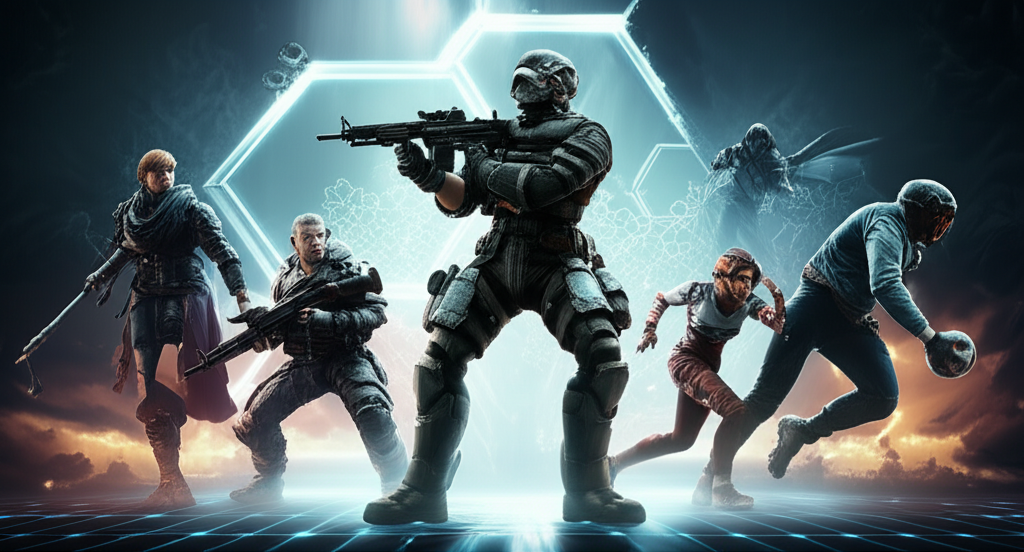The Next Frontier: How Blockchain is Reshaping the Gaming Industry
The world of gaming is undergoing a significant transformation, driven by the innovative potential of Web3 technologies. Recent developments highlight a growing trend of major game developers and publishers exploring and investing heavily in blockchain integration, aiming to revolutionize player ownership, monetization, and interactive experiences. This shift promises a more decentralized and player-centric gaming ecosystem.
From Centralized Economies to Player-Owned Assets
Traditionally, in-game assets are fully controlled by game developers. Web3, powered by blockchain, introduces true digital ownership through Non-Fungible Tokens (NFTs). Players can now own unique in-game items, characters, or virtual land as verifiable digital assets, which can be freely traded, sold, or even used across different games. This paradigm shift from a centralized economy to a player-owned model empowers users, giving them a tangible stake in the virtual worlds they inhabit. Recent announcements from established gaming giants indicate a clear move towards integrating these player-centric economic models, offering new avenues for engagement and value creation.
The Rise of Play-to-Earn and Evolving Monetization Models
A key driver of Web3 gaming’s recent surge is the “Play-to-Earn” (P2E) model, where players can earn cryptocurrency or NFTs through gameplay. While early iterations faced criticism regarding sustainability, the model is evolving. Newer P2E games are focusing on engaging gameplay loops and sustainable economic designs rather than solely relying on speculative asset value. This evolution is attracting more traditional gamers who seek entertainment first, with the added benefit of potential earnings. Companies are experimenting with hybrid models that blend traditional purchases with blockchain-enabled asset ownership and earning opportunities, opening up diverse monetization streams beyond conventional in-game stores.
Interoperability and the Metaverse Vision
One of the most ambitious promises of Web3 gaming is true interoperability – the ability for digital assets and even avatars to move seamlessly between different games and virtual environments. While still in its nascent stages, several projects are making significant strides toward creating a connected metaverse where digital identity and assets are portable. This vision aligns with the broader Web3 ethos of decentralization and open standards, aiming to break down the walled gardens of proprietary gaming platforms. Recent partnerships and blockchain infrastructure advancements are laying the groundwork for a future where a player’s unique sword acquired in one game could potentially be wielded in another.
Technical Advancements and Scalability Solutions
The performance limitations of early blockchains were a significant hurdle for gaming, which demands high transaction speeds and low latency. However, recent advancements in layer-2 solutions, sidechains, and new blockchain architectures are addressing these scalability concerns. These technical innovations are enabling faster, cheaper, and more efficient in-game transactions, making the user experience smoother and more comparable to traditional gaming. Improved blockchain security and user-friendly wallet solutions are also contributing to a more robust and accessible infrastructure for Web3 games, fostering wider adoption among developers and players alike.
Challenges and the Path Forward for Mass Adoption
Despite the rapid progress, Web3 gaming faces significant challenges, including regulatory uncertainty, market volatility, and the need for greater user education. Skepticism from traditional gamers, often wary of NFTs and cryptocurrencies, also remains. However, the increasing involvement of mainstream gaming companies, coupled with continued innovation in user experience and economic design, suggests a clear path towards mass adoption. The focus is shifting from speculative assets to creating genuinely fun, immersive, and rewarding gaming experiences that leverage blockchain’s unique capabilities, promising a vibrant future for the industry.
Conclusion
The integration of Web3 and blockchain technologies is fundamentally reshaping the gaming landscape, moving towards a future defined by player ownership, new monetization models, and enhanced interoperability. While challenges persist, ongoing technical advancements and significant investments from major industry players underscore a strong belief in the transformative power of decentralized gaming. The next few years are poised to witness a continuous evolution, bringing more innovative and engaging experiences to players worldwide.

